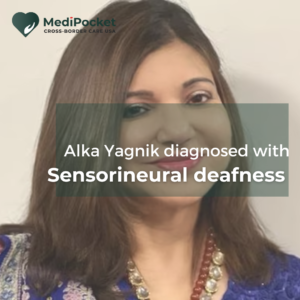Stanford Medicine

Stanford Health Care is a premier academic medical institution in Stanford, California.
Stanford Health Care offers a comprehensive spectrum of medical services, including basic and specialised care, surgical and non-surgical therapies, and emergency care. Almost 2,000 physicians and over 12,000 people, including nurses, researchers, and other healthcare professionals, work at the medical facility.
Cancer treatment, cardiology, neurology, orthopaedics, and transplant services are among the medical disciplines for which the hospital is well-known. Stanford Health Care is also known for its cutting-edge treatments and techniques, such as minimally invasive surgery and robotic surgery.
With over 1,500 current clinical trials and research projects, Stanford Health Care is a medical research leader. Its research initiatives include a variety of medical specialities, including cancer, neurology, cardiology, and others.
Stanford Health Care is dedicated to education and community outreach in addition to clinical and research initiatives. For medical students, residents, and other healthcare workers, the medical center offers a variety of educational activities and tools. It also provides community health services including health screenings and wellness activities.
Stanford’s University school of medicine
Stanford Health Care is linked with Stanford University School of Medicine, one of the nation’s top medical institutions. This enables the medical facility and the university’s research programs to work closely together.
Stanford Medicine children’s hospital
Stanford Medicine Children’s Health offers a comprehensive spectrum of pediatric medical services, including basic and specialized care, surgical and non-surgical therapies, and emergency services. Almost 900 physicians and other healthcare workers, including nurses, therapists, and other specialties, work at the facility.
The hospital is well-known for its competence in a variety of pediatric disciplines, such as cancer treatment, cardiology, neurology, and transplant services. Stanford Medicine Children’s Health also provides cutting-edge medicines and treatments for a wide range of uncommon and difficult ailments, such as genetic abnormalities and autoimmune diseases.
Stanford Medicine Children’s Health is dedicated to pushing the boundaries of pediatric medical research and innovation. Many research institutes and centers are housed inside the hospital, with the goal of enhancing knowledge and treatment of children disorders.
Innovations
Let us now delve into the breakthroughs made by Stanford Medicine.
- 1956: The first linear accelerator was used to treat cancer. Henry Kaplan and campus physicists created the machine.
- 1960: surgeon Roy Cohn performed the first kidney transplant in California.
- Stanford opened the first newborn intensive care facility that enabled parents to visit in 1962.
- 1964: Milton Flocks and Christian Zweng, ophthalmologists, successfully employ a laser photocoagulator to treat patients with various retinal illnesses, and the first sleep apnea monitor is produced in the same year.
- 1965: Researchers create a method for removing blood that is needed to prevent internal bleeding in haemophiliacs.
- 1967: Nobel winner Arthur Kornberg discovered a strand of physiologically active DNA, paving the stage for genetic research.
- 1968: Norman Shumway successfully transplants a heart into Mike Kasperak, a 54-year-old steelworker who survives for 14 days.
- 1971: Insulin resistance is discovered to be the primary physiological feature of type 2 diabetes by researchers John Farquhar and Gerald Reaven.In the same year, scientists Arthur Kornberg and Douglas Brutlag find that DNA replication may be prepared by the host RNA. The first significant clinical trial, led by John Farquhar and Peter Wood, demonstrates that reducing cholesterol levels reduces heart disease.
- 1972: Hugh McDevitt, an immunologist, identifies regulatory genes that are thought to influence the body’s responses to foreign proteins, implying that people may be predisposed to specific illnesses.
- 1975: John Farquhar and Peter Wood show that exercise increases “good” cholesterol levels and can lower LDL cholesterol levels.
- 1980: Henry Kaplan and Lennart Olsson develop cells to produce human antibodies for better illness detection and therapy.
- 1981: surgeon Bruce Reitz performs the world’s first combination heart and lung transplant on Mary Gohlke. Oncologist Ronald Levy reported the first effective use of monoclonal antibodies, which are laboratory-created molecules tailored to connect to particular abnormalities in cancer cells, the same year.
- 1989: Eugene Butcher, a pathologist, developed a receptor that directs white blood cells towards peripheral lymph nodes.
- 1992: Doctor Ron Levy discovered a cancer vaccine that might prevent recurrence of lymphomas in chemotherapy patients.
- 1993: William Haskell, a researcher, discovered that comprehensive lifestyle adjustments and prevention/treatment programs can minimize cardiac events and halt the advancement of atherosclerosis in the coronary arteries.
- 1994: Neonatologist David Stevenson creates a diagnostic tool for quick bedside screening of red blood cell breakdown in jaundiced babies.
- 1996: Developmental scientist Matthew Scott and colleagues at UC-San Francisco determine that basal cell cancer is caused by a mutation in the hedgehog gene.
- 1997: Michael Link, a pediatric oncologist, leads a trial that demonstrates that chemotherapy may be lowered by two-thirds in children with early-stage non-lymphoma Hodgkin’s with no deleterious repercussions.
- 2000: Roger Kornberg, a structural biologist, demonstrates the structure of the RNA polymerase protein, a stage in the transfer of information from gene to protein. This finding will later earn Kornberg a Nobel prize in chemistry.
- 2001: Rosemarie DeKruyff discovers a gene family that may be involved in the development of asthma in a mouse study in 2001.
- 2007: Minnie Sarwal, a pediatric nephrologist, discovers that kidney transplant recipients with comparable gene-expression patterns can remove or lessen their reliance on immunosuppressive medicines.
- 2008: Amato Giaccia, a radiation oncologist, discovers a chemical that destroys kidney cancer cells, potentially opening up new therapeutic possibilities. In the same year, radiologist Sanjiv Gambhir created a new form of imaging device that can illuminate tumours in living subjects with a one-trillionth-of-a-meter accuracy.
- 2008: bioengineer Stephen Quake and his colleagues create a technique for screening a pregnant woman’s blood for chromosomal diseases such as Down syndrome in her foetus.
- 2009: Pathologist Irving Weissman discovers the stem cell that causes bladder cancer and demonstrates how the cell employs the “don’t-eat-me” signal, a chemical known as CD47, to elude the body’s defences.
- 2010: A team of scientists examines bioengineer Stephen Quake’s genome to forecast his risk of acquiring heart disease, Alzheimer’s disease, and cancer.
- 2011: Doctors at Lucile Packard Children’s Hospital Stanford utilize aggregate patient data from electronic medical records to determine the best treatment choice for a youngster with a rare disease.
- 2011: Neurobiologist Ricardo Dolmetsch generates human heart cells with the same genetic mutation using skin cells from individuals with a severe hereditary cardiac abnormality, allowing his team to test medications on the cells.
- 2013: Endocrinologist Aaron Hsueh’s in-vitro activation method is utilized to promote egg development in certain infertile women, and one of them bears delivery.
- 2014: Immunologist Kari Nadeau’s research demonstrates that a blood test might detect whether individuals who have been desensitised to peanut allergies need to continue eating peanuts on a regular basis to maintain their tolerance.
- 2014: Michael Greicius and his colleagues discovered in 2014 that women who possess a copy of a gene variation known as ApoE4 had a significantly increased chance of acquiring Alzheimer’s. Brain abnormalities in chronic fatigue syndrome patients were observed the same year.
- 2015: A bacterial community in pregnant women has been connected to premature delivery. The discovery of iron-containing inflammatory cells in Alzheimer’s brains that might be utilised to treat the disease was done in the same year.
Stanford and MediPocket
Stanford Medicine was named one of the top hospitals in the country by US News and World Report due to its cutting-edge technology and high-quality services. The organization believes in providing premium and specialized healthcare to all patients who are deserving of such care.
After observing how Indians want to be treated at such prestigious facilities but are unable to do so owing to travel and other problems, we, MediPocket World, are bringing Stanford medicine to the people of India digitally. People may now speak with specialists from Stanford and other well-known hospitals for the first time. We make cross-border care much easier and more convenient with Medipocket World. Register now and book a free inquiry to get started.








